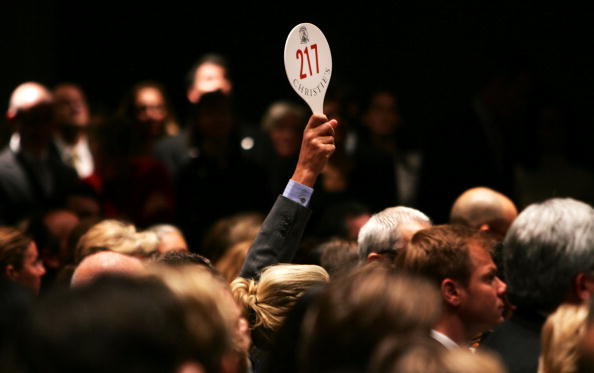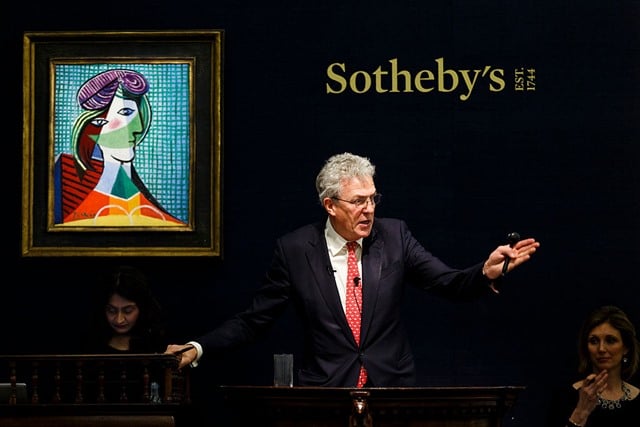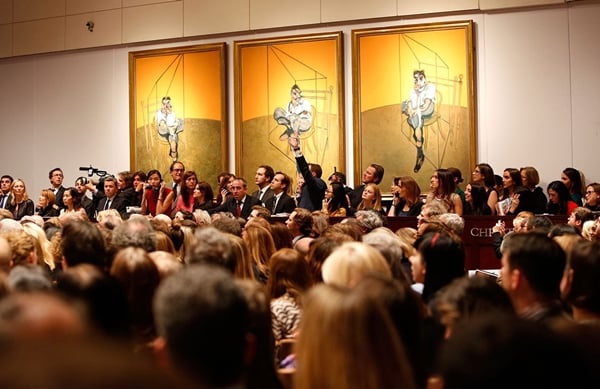

Art Demystified is a series that attempts to shed light on esoteric aspects of the art world.

Auction houses offer collectors minimum prices to win important consignments.
Photo: Photo by Spencer Platt/Getty Images.
How do auction houses operate today? The reality is that amid greater competition for consignments, auction houses have developed a number of complex financial arrangements to secure top-level works. One such arrangement is a minimum price guarantee.
The art auction market today is dominated by two major international players, Sotheby’s and Christie’s. Both houses are in constant competition for the same works, and have been wooing consignors with promises of reaching a certain price—which comes at a cost.
The most common arrangement is a minimum price guarantee. “Some sellers require a measure of certainty around the value of the assets they have consigned to us for sale,” a Christie’s spokesperson told artnet News in an email. “In such cases, Christie’s will sometimes agree to guarantee to the seller that whatever the outcome of the auction, the seller will receive a minimum sale price for the work.”

Sotheby’s auctioneer Henry Wyndham at the auctioneer’s London salesroom in February 2016.
Courtesy of Tristan Fewings/Getty Images.
Speaking to artnet News last November, auctioneer Simon de Pury explained, “[Collectors] are not going to want to take too much of a risk; they will want to have their consignment protected, and therefore they will discuss to which company to give their work based on the financial package they will be able to obtain. That explains why at the top level, guarantees are more and more the norm.”
Beyond the headline-grabbing record prices, profit margins are often thin. Glossy catalogs, shipping costs, the insurance of masterpieces, and huge marketing budgets to promote sales are all extremely costly. Since the auction houses keep a percentage of the sale price if it exceeds the minimum price guarantee, betting on the work selling at above the guaranteed sum can be very lucrative.

Auction houses are resorting to financial arrangements amid greater competition.
Courtesy of Christie’s.
However, if works fails to sell, or sells below the agreed minimum guaranteed price, the consequences can be disastrous. In 2001, Phillips de Pury and Luxembourg offered guarantees totaling $180 million to win the right to sell the collection of Nathan and Marion Smooke. The sale raised only $86 million. That enormous loss is often used to illustrate the pitfalls of financial arrangements.
To minimize the risk of accruing losses, auction houses will sometimes try to share the risk with a third party. “Giving a minimum price guarantee to a seller means that Christie’s is at risk of making a loss, which can be significant, if the lot fails to sell,” said the Christie’s spokesperson. “It therefore sometimes chooses to share that risk with a third party—which may be an institution, an individual, or another art market professional. In return for the third party agreeing to share that risk, Christie’s agrees to pay the third party a fee.”








